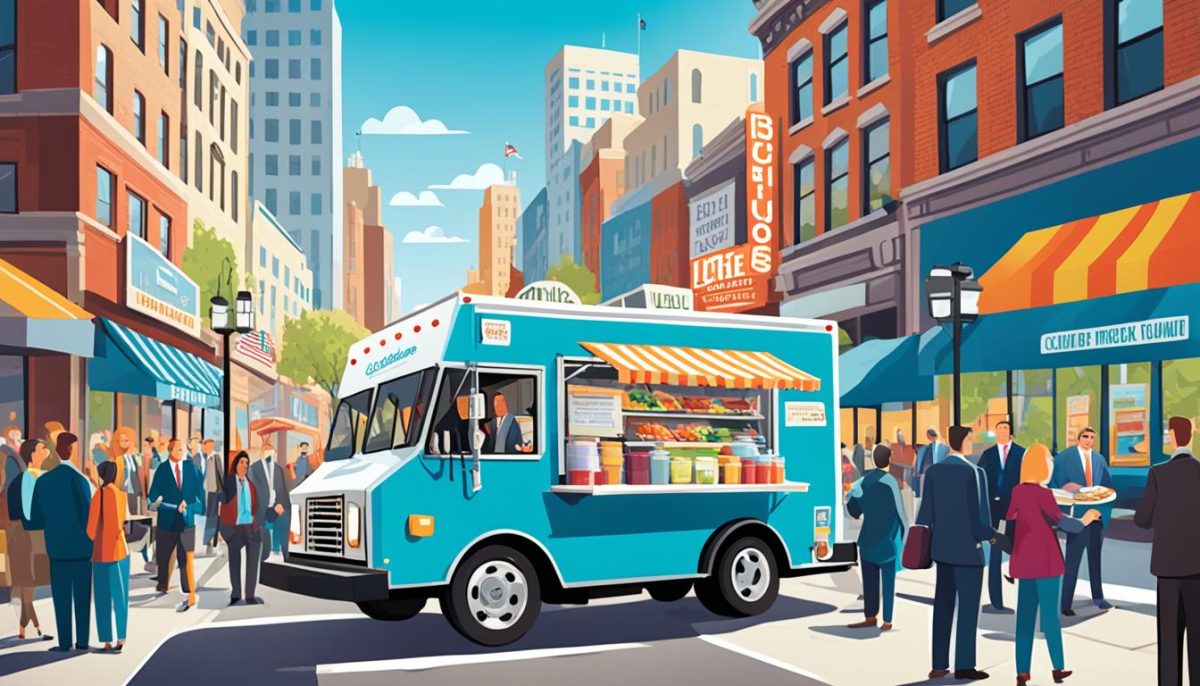If you have a culinary passion and dream of turning it into a profitable venture, starting a home delivery food business might be the perfect opportunity for you. With the rise in demand for convenient and delicious meals delivered right to people’s doors, there has never been a better time to dive into this industry. In this article, we will provide you with essential tips and guidance to help you taste the success of running your own home delivery food business.
Whether you’re a seasoned chef, a home cook with a secret recipe, or someone with a knack for creating mouthwatering dishes, this guide will walk you through the necessary steps to get your business up and running. From finding your niche and target market to setting up your food business, building a strong online presence, creating effective marketing strategies, streamlining operations and delivery logistics, and even scaling and expanding your business, we have all the information you need.
Starting a home delivery food business comes with its own set of challenges, but with careful planning and execution, it can be a highly rewarding venture. So let’s dive in and explore the world of home delivery food business together!
Finding Your Niche and Target Market
As you embark on your journey to start a home delivery food business, one of the first steps is finding your niche and target market. This crucial process involves identifying your unique selling point, understanding customer preferences, and pinpointing the right audience for your culinary offerings.
Your niche is what sets you apart from the competition. It could be a specific cuisine, dietary specialty, or a unique twist on traditional dishes. By focusing on a niche, you can cater to a specific segment of customers and establish yourself as an expert in that area. This specialization allows you to stand out and attract customers who are passionate about the type of food you offer.
To narrow down your niche, consider your own culinary passions and expertise. What are you truly passionate about? What flavors, ingredients, or cooking techniques do you excel at? By aligning your business with your personal strengths and interests, you can bring an authentic touch to your offerings and connect with your target audience on a deeper level.
Once you have identified your niche, it’s time to define your target market. Understanding your target audience is essential for effective marketing and business growth. Conduct market research to learn more about their preferences, demographics, and behavior patterns.
Consider factors such as age, location, income level, and lifestyle when identifying your target market. Are you catering to busy professionals looking for quick and healthy meal options? Or perhaps families in need of convenient dinner solutions? By understanding your target market, you can tailor your menu, marketing strategies, and delivery services to meet their specific needs and preferences.
Remember, finding your niche and target market is an ongoing process. As you operate your home delivery food business, stay attuned to customer feedback and market trends. Periodically reassess your target market and niche to ensure you are meeting evolving customer demands and staying ahead of the competition.
Setting Up Your Food Business
Once you’ve identified your niche and target market, it’s time to set up your home delivery food business. This section will guide you through the essential steps required to establish a successful and efficient operation.
Obtaining Permits and Licenses
Before you can start serving delicious meals to your customers, it’s crucial to ensure you have all the necessary permits and licenses. This includes obtaining a food service permit, health department approvals, and business registration. Compliance with local regulations is vital to maintain the highest safety standards and gain your customers’ trust.
Setting Up a Professional Kitchen
A well-equipped and organized kitchen is the heart of your home delivery food business. Consider the layout and functionality when designing your kitchen space. Install commercial-grade appliances, ensure proper ventilation, and set up a well-stocked pantry. Don’t forget to invest in reliable refrigeration systems to maintain the quality and freshness of your ingredients.
Establishing Efficient Operations
Efficiency is key to delivering exceptional service to your customers. Develop streamlined processes for order taking, meal preparation, packaging, and delivery. Implement a reliable system for inventory management to avoid running out of ingredients and minimize food waste. Additionally, consider leveraging technology solutions such as POS systems and delivery management software to optimize your operations.
Creating an Appealing Menu
Your menu is your culinary showcase. Craft a diverse and enticing menu that showcases your unique offerings. Consider dietary preferences and restrictions, offering options for vegetarian, vegan, gluten-free, or other specialized diets. Regularly update and refresh your menu to keep customers excited and coming back for more.
Food safety is of utmost importance in the food industry. Implement stringent food handling practices and employee training programs to maintain cleanliness and hygiene. Regularly conduct inspections and audits to ensure compliance with local health and safety regulations. Prioritize your customers’ health and well-being to build trust and loyalty.
Building a Strong Online Presence
In today’s digital age, having a strong online presence is essential for the success of your home delivery food business. With more people relying on the internet to discover and order food, it’s crucial to establish a strong presence that attracts and engages potential customers.
Here are some best practices to help you build a robust online presence:
1. Create a Visually Appealing Website or Mobile App
A visually appealing website or mobile app can make a lasting impression on your target audience. Invest in professional web design and user-friendly interfaces that showcase your brand and menu. Ensure that the site or app is responsive and optimized for different devices, providing a seamless user experience.
2. Optimize for Search Engines
To increase your visibility and reach a wider audience, optimize your website or app for search engines. Conduct keyword research to identify relevant food-related terms that potential customers are searching for. Incorporate these keywords into your website content, meta tags, and descriptions to improve your search engine rankings and drive organic traffic.
3. Utilize Social Media Platforms
Social media platforms like Instagram, Facebook, and Twitter can be powerful tools for connecting with customers and promoting your home delivery food business. Establish a strong presence on these platforms by regularly sharing high-quality photos of your dishes, engaging with followers, and running targeted ad campaigns to reach your desired audience.
4. Encourage Online Reviews and Testimonials
Positive online reviews and testimonials can significantly boost your credibility and attract new customers. Encourage satisfied customers to leave reviews on popular platforms like Google Maps, Yelp, and TripAdvisor. Respond to both positive and negative reviews in a professional and timely manner to show that you value customer feedback.
5. Offer Online Ordering and Delivery Services
Incorporate online ordering and delivery services into your website or app to provide a convenient and seamless experience for your customers. Partner with reputable delivery platforms or develop your own in-house delivery service to ensure prompt and reliable deliveries. This will enhance customer satisfaction and encourage repeat business.
By implementing these strategies, you can establish a strong online presence for your home delivery food business and attract a steady flow of customers. Remember to monitor your online presence regularly, engage with your audience, and adapt your strategies based on customer feedback and industry trends.
Creating Effective Marketing Strategies
Marketing plays a critical role in promoting and growing your home delivery food business. With the right strategies, you can reach your target audience, increase brand awareness, and drive customer acquisition. In this section, we will provide valuable insights to help you develop an effective marketing plan that delivers results.
- Identifying Your Target Audience: Before diving into marketing tactics, it’s essential to identify your target audience. Understand their preferences, behaviors, and demographics. This knowledge will help you tailor your marketing messages and choose the most suitable channels.
- Content Marketing: Content marketing is a powerful way to engage and nurture your audience. Create informative and engaging content that showcases your culinary expertise and highlights the unique value your business offers. Consider starting a blog, sharing recipes, or creating video content to inspire and captivate your audience.
- Social Media Marketing: Leverage the power of social media to connect with your customers and build a loyal following. Choose platforms that align with your target audience and create engaging content that showcases your food, special offers, and behind-the-scenes glimpses into your kitchen. Engage with your audience by responding to comments, addressing feedback, and running social media contests or giveaways.
- Email Marketing: Build an email list of interested customers and regularly send out newsletters or promotional offers. Use email marketing to keep your audience informed about new menu items, special deals, and upcoming events. Personalize your emails to make your customers feel valued and appreciated.
- Influencer Partnerships: Collaborate with influencers, food bloggers, or local celebrities who have a strong online presence and a relevant audience. By partnering with them, you can leverage their reach and credibility to introduce your home delivery food business to a wider audience. Offer special discounts or exclusive promotions to their followers to incentivize orders.
- Offline Strategies: Don’t underestimate the power of offline marketing. Consider distributing flyers, participating in local food festivals or events, or even advertising in local print media. Explore partnerships with other local businesses, such as gyms or offices, to offer exclusive discounts or customized meal plans.
To boost your marketing efforts, it’s crucial to track and analyze your campaign’s performance. Monitor key metrics such as website traffic, social media engagement, email open rates, and customer feedback. This data will help you optimize your marketing strategies and make data-driven decisions for future campaigns.
“Effective marketing is the key to success for any home delivery food business. By understanding your target audience, creating engaging content, leveraging social media, and exploring offline strategies, you can attract more customers and build a loyal customer base.”
Now that we’ve covered the essential marketing strategies, let’s move on to the next section to learn about streamlining operations and delivery logistics.
Streamlining Operations and Delivery Logistics
Efficient operations and seamless delivery logistics are crucial to providing exceptional service to your customers. By streamlining your operations, you can ensure that your business runs smoothly, maximizing productivity and customer satisfaction. Additionally, optimizing the delivery logistics enables you to deliver orders in a timely and reliable manner, enhancing the overall customer experience.
Optimizing Processes
To streamline your operations, start by identifying bottlenecks and inefficiencies in your current processes. Look for opportunities to automate tasks, eliminate redundancies, and improve communication between different departments. By implementing efficient workflows, you can reduce errors, enhance productivity, and ultimately save time and resources.
Investing in technology solutions such as order management systems, inventory management software, and delivery tracking tools can significantly streamline your operations. These tools allow you to automate repetitive tasks, track inventory levels in real-time, and optimize delivery routes for maximum efficiency.
Inventory Management
Effective inventory management is essential for a successful home delivery food business. With accurate inventory tracking, you can avoid stockouts, minimize wastage, and ensure that you always have the necessary ingredients and supplies to fulfill customer orders.
Consider implementing a barcode or RFID system to track inventory levels automatically. This technology enables you to monitor stock in real-time, set up automatic reordering when inventory reaches a certain threshold, and reduce the risk of manual errors. Utilize clear labeling and organization techniques to ensure that staff can easily locate and retrieve items, further improving operational efficiency.
Handling Customer Inquiries
“Exceptional customer service is the key to building customer loyalty and driving repeat business.”
Efficiently handling customer inquiries is crucial for customer satisfaction. Implement a robust system to manage and respond to customer queries promptly. This can include setting up a dedicated customer service team, leveraging customer relationship management (CRM) software, and providing multiple channels for customer communication, such as phone, email, and live chat.
Train your customer service team to handle inquiries professionally and efficiently, providing them with the necessary resources and knowledge to address common customer concerns. By resolving issues quickly and effectively, you can build trust and loyalty among your customer base.
Ensuring Timely and Reliable Deliveries
To optimize your delivery logistics, establish clear processes for order fulfillment and dispatch. This includes assigning delivery personnel, optimizing delivery routes, and monitoring delivery timeframes closely. Implement a reliable tracking system that allows customers to track their orders in real-time, enhancing transparency and improving the overall delivery experience.
In addition to internal processes, consider partnering with reliable third-party logistics providers or delivery services. These partnerships can help you scale your deliveries, ensure on-time performance, and reach a wider geographical area. Choose partners that align with your brand values and offer the level of service your customers expect.

| Benefits of Streamlining Operations and Delivery Logistics | How Streamlining Improves Efficiency |
|---|---|
| 1. Improved customer satisfaction | 1. Elimination of bottlenecks |
| 2. Reduced operational costs | 2. Automation of repetitive tasks |
| 3. Enhanced productivity | 3. Real-time inventory tracking |
| 4. Minimized errors and wastage | 4. Efficient handling of customer inquiries |
| 5. Reliable and timely deliveries | 5. Optimal delivery route planning |
Scaling and Expanding Your Business
Now that your home delivery food business is up and running, it’s time to think about scaling and expanding your operations to reach new heights of success. Scaling your business means growing it in size, output, and revenue, while expanding refers to reaching new markets and customer segments.
One effective strategy for scaling your business is to open additional locations. By expanding to multiple areas, you can tap into a larger customer base and increase your brand’s visibility. This can be achieved through franchising, acquiring existing restaurants, or even setting up your own new branches.
Another way to scale your home delivery food business is by partnering with other businesses. Collaborating with complementary brands, such as grocery stores or event venues, can help you expand your customer reach and increase your sales. This strategic partnership can be mutually beneficial, allowing both parties to tap into each other’s customer base and offer value-added services.
Exploring new markets is yet another growth strategy that can significantly expand your business. Identify untapped customer segments or new geographic areas where your culinary offerings can resonate. Conduct market research to understand the preferences and demands of these markets, and adapt your menu and marketing strategies accordingly.



